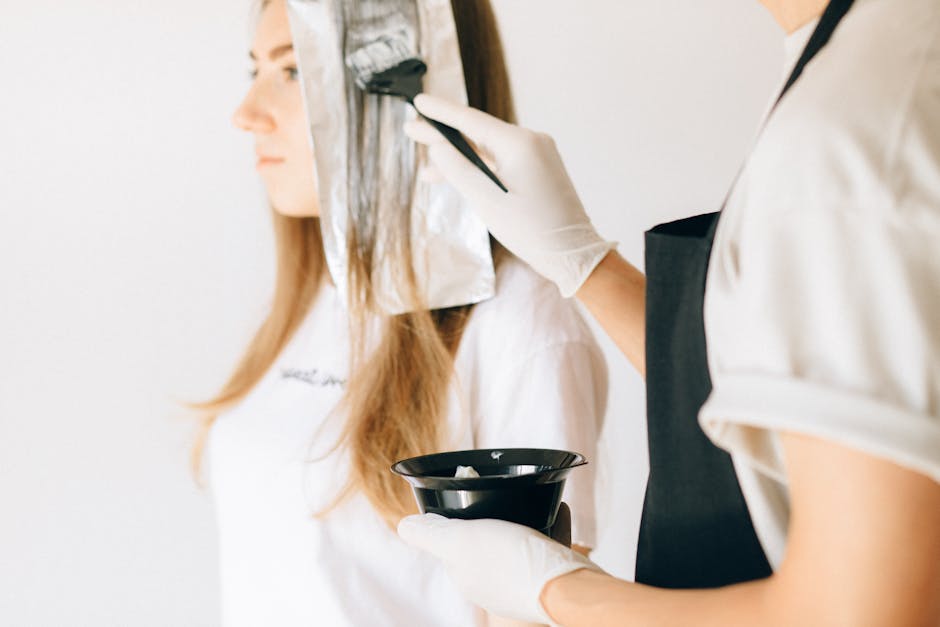Ever glanced in the mirror and thought about swapping your hair color for something more vibrating or subtle but worried about potential damage? Let’s unravel the myths and truths behind hair coloring.
Understanding Hair Coloring
Hair coloring can be an exciting way to change your look, but it’s important to understand what it entails. Whether it’s covering grays or diving into a completely new shade, the process involves chemical changes. These chemicals open up the hair cuticle to deposit color, a transformation that, while beautiful, potentially alters the hair’s natural state.
At its core, hair dyeing isn’t just about changing colors; it’s a chemical reaction happening right on your scalp. Depending on the dye and method, it can range from a simple physical coating to a more complex chemical process. Understanding this can help you make informed decisions about hair coloring.
Types of Hair Dyes and Their Effects
Hair dyes are not a one-size-fits-all solution. From temporary dyes that wash out in a few shampoos to permanent solutions that change hair color completely, each type carries its set of pros and cons. Semi-permanent and demi-permanent options offer a middle ground, altering hair color for a longer duration than temporary dyes, yet without the commitment of permanent changes.
Permanent dyes are the most potent, penetrating the hair cuticle and lasting until the hair grows out or is cut. However, their strength also means they’re the most likely to cause damage if not used correctly. On the other hand, temporary and semi-permanent dyes coat the hair surface, providing color without significantly affecting hair health.
How Chemicals in Hair Dyes Work
The science behind hair coloring hinges on opening the hair’s cuticle to allow color to penetrate. Alkaline substances, like ammonia, and peroxide are commonly used to facilitate this process. While effective, these chemicals can lead to dryness and breakage if the hair isn’t properly cared for post-treatment.
Common Signs of Hair Damage
Recognizing the signs of hair damage early can prevent further harm. Look out for increased breakage, split ends, dryness, and a dull or lackluster appearance. These can be indicators that your hair needs a bit more TLC after coloring.
Another tell-tale sign is when your hair becomes difficult to manage or style, indicating possible damage to the hair structure. Changes in texture, such as increased frizziness or a straw-like feel, can also signal that it’s time to reassess your hair care regimen.
Preventing Damage When Coloring Your Hair
To minimize hair damage from coloring, opt for dyes without harsh chemicals or consider gentler application methods. Using deep conditioning treatments and regularly trimming your ends can also mitigate damage. Always follow the instructions, or better yet, consult a professional stylist to choose the best dye and application method for your hair type.
Incorporating a sulfate-free shampoo and conditioner into your hair care routine can greatly reduce the risk of stripping away the natural oils that protect your hair from damage. Additionally, limiting heat styling and exposure to the sun will preserve the longevity of your color and the health of your hair.
Repairing Hair After Coloring
If you’ve experienced damage from hair coloring, it’s not too late to repair your strands. Investing in a high-quality hair mask or deep conditioning treatment can restore moisture and elasticity. Regularly using leave-in conditioners or hair oils will also help protect and nourish your hair, encouraging healthy growth and shine.
When to Consult a Professional
Whenever you’re considering a major color change, or if you have experienced damage from previous coloring, it’s wise to consult a professional. They can provide valuable guidance on the best products and treatments to use, helping you achieve your desired look while maintaining the health of your hair.
Professionals also play a crucial role in correcting color gone wrong. If you’re unhappy with a home dyeing outcome, a stylist can offer solutions to correct the color and treat any resultant damage, ensuring your hair remains as healthy as possible.
Maintaining Healthy, Colored Hair
Navigating the colorful world of hair dyes doesn’t have to feel like a risky adventure. With the right knowledge and care, you can embrace the transformation hair coloring offers, minimizing damage and keeping your locks luscious. Remember, your hair’s health is paramount, so treat it with the love it deserves, no matter the color.

